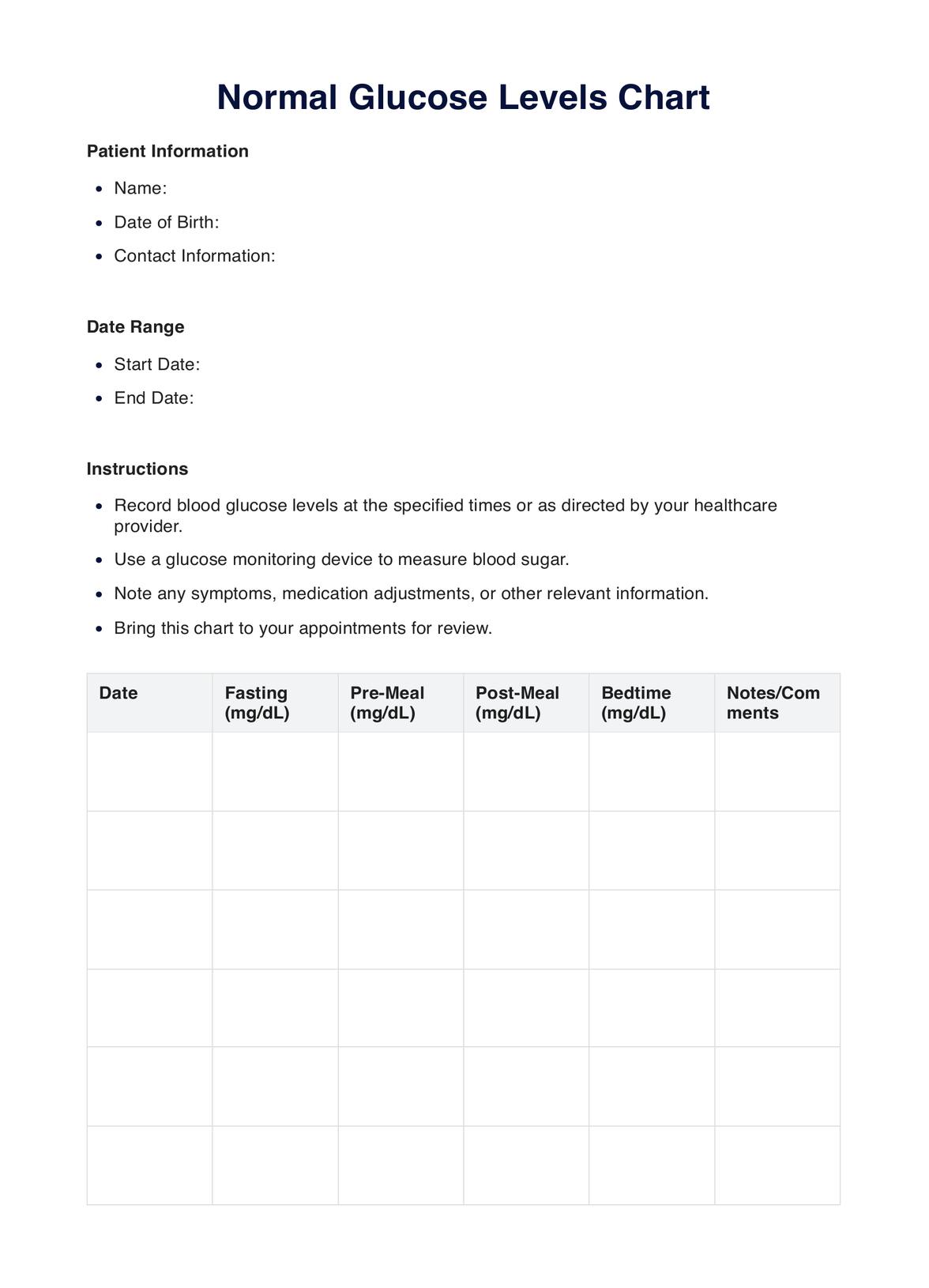Individuals with diabetes, healthcare professionals, dietitians, and researchers often request Normal Glucose Levels Charts.

Monitor your blood sugar effectively with our Normal Glucose Levels Chart. Download the PDF for accurate tracking and better diabetes management.
Individuals with diabetes, healthcare professionals, dietitians, and researchers often request Normal Glucose Levels Charts.
They are used for daily blood sugar monitoring, diabetes management, prediabetes assessment, meal planning, and research on blood sugar regulation.
Users record blood sugar readings based on specified times or contexts on the chart. The chart helps track trends, assess treatment effectiveness, and make informed decisions.
EHR and practice management software
*No credit card required
Free
$0/usd
Unlimited clients
Telehealth
1GB of storage
Client portal text
Automated billing and online payments